
Photo Source: Network Collection. (such as invasion and deletion)
This paper mainly studies two kinds of eggshell modeling ideas, one is the rounded rectangular convex surface represented by the type at the bottom left of the above figure, and the other is the overall elliptical eggshell surface represented by AirPods Pro. First study the first kind of rounded rectangular convex surface.
Try it with conventional thinking first, and the results are as follows:

The idea of modeling from left to right is:
01
Method: Create a surface from a network cable.
Conclusion: The structural line is cumbersome, the upper and lower convergence points have creases, and the four corners have creases.
02
Method: Embedding.
Conclusion: The structural lines are neat, but the surrounding structural lines are unreasonable. There will be an abnormal bulge similar to a square in the middle, with creases on the four sides.
03
Method: Double track sweep.
Conclusion: The structural line is neat. The convergence point is in the middle of the surface and has little influence on the surface quality. There are creases on the four corners.
04
Method: Rotate forming along the path.
Conclusion: The structural line is simplified. The convergence point is in the middle of the surface and has little influence on the surface quality. There are creases in the four corners.
05
Methods: Intercept the 1/4 curve, rotate it along the path and then mirror it.
Conclusion: The structure line is simplified, and the direct combination will have multiple beginning and end edges, and control point editing cannot be started. The convergence point is in the middle of the surface, right
Surface quality has little influence. There are creases on the four corners.
The above five methods show that the overall cost performance of method 05 is relatively high, but the main problems are:
01. There are creases in the four corners, which should be the problem of the path line.
02. Direct combination will have multiple beginning and end edges, and control point editing cannot be turned on.
Try solutions:
01. Rebuild the path line.
02. Use the Merge Surface command to merge surfaces that can be edited and adjusted for open control points.
First analyze the path line.

From the control point and the curvature comb, it can be seen that the curvature of the path line is not smooth. Compared with the above figure, it is found that the curvature comb fault is the crease. So, try to solve the curvature comb fault and see the effect.

Use pink thread as an aid, and select the maximum curvature when mixing to make it extremely smooth.
After handling the path line, check the effect.

The feeling of 1/4 is not bad, and the structural line is also very simple. Merge and see.

When merging, attention should be paid to the selection sequence. First merge the two surfaces or the upper and lower surfaces to form two major surfaces, and then merge the two major surfaces. Otherwise, the structural line will deviate, as shown in the following figure.

The left side is the result of the sequential combination of one revolution, and the right side is the result of merging the two surfaces or the upper and lower surfaces respectively to form two major surfaces, and then merging the two major surfaces.

Open the zebra pattern and have a look. It feels good. Finally, open the control point and have a look.
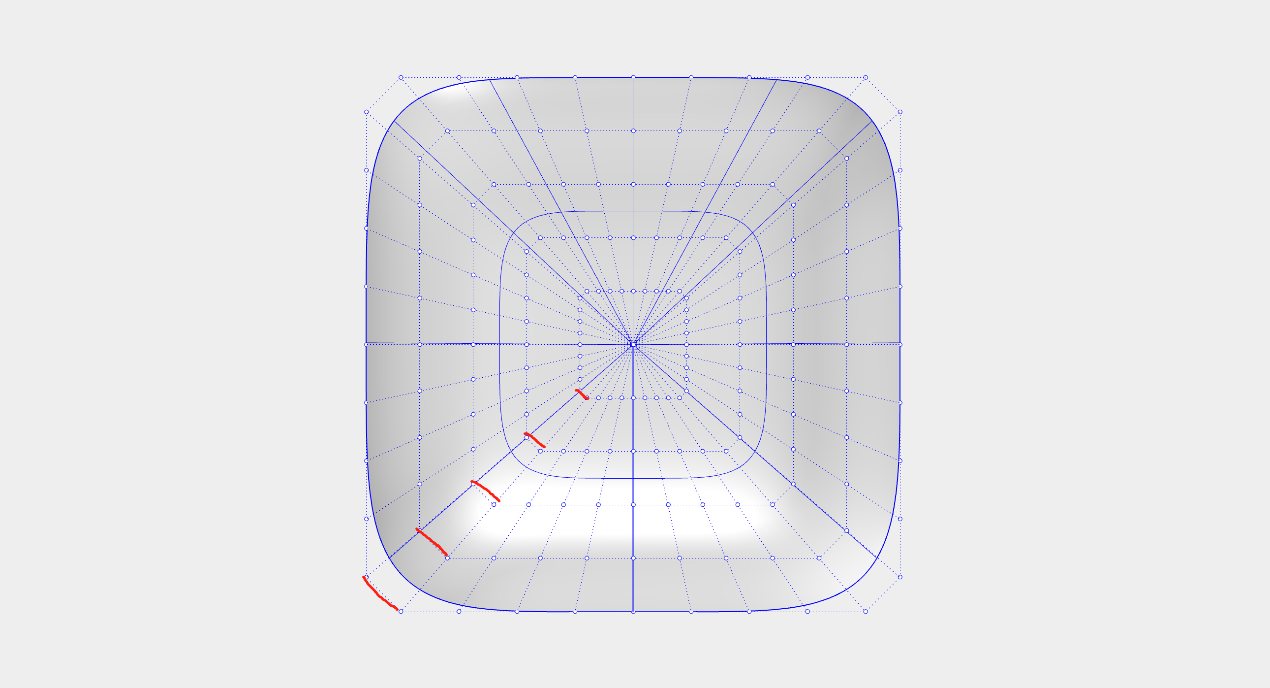
Generally speaking, if you can open the control point for editing, this quality is enough. However, if you carefully observe the structural lines of the control points, you will find that there are still small creases in the four corners. If you analyze the problem, it should be caused by the control points of the road profile not being on the line.

Try to reconstruct the contour line using a curve passing through several points. If you reconstruct it directly, it will be like the pink line on the left of the figure above. So you can rebuild the 13.1 order polyline first. The control points are evenly distributed while ensuring the curve trend.
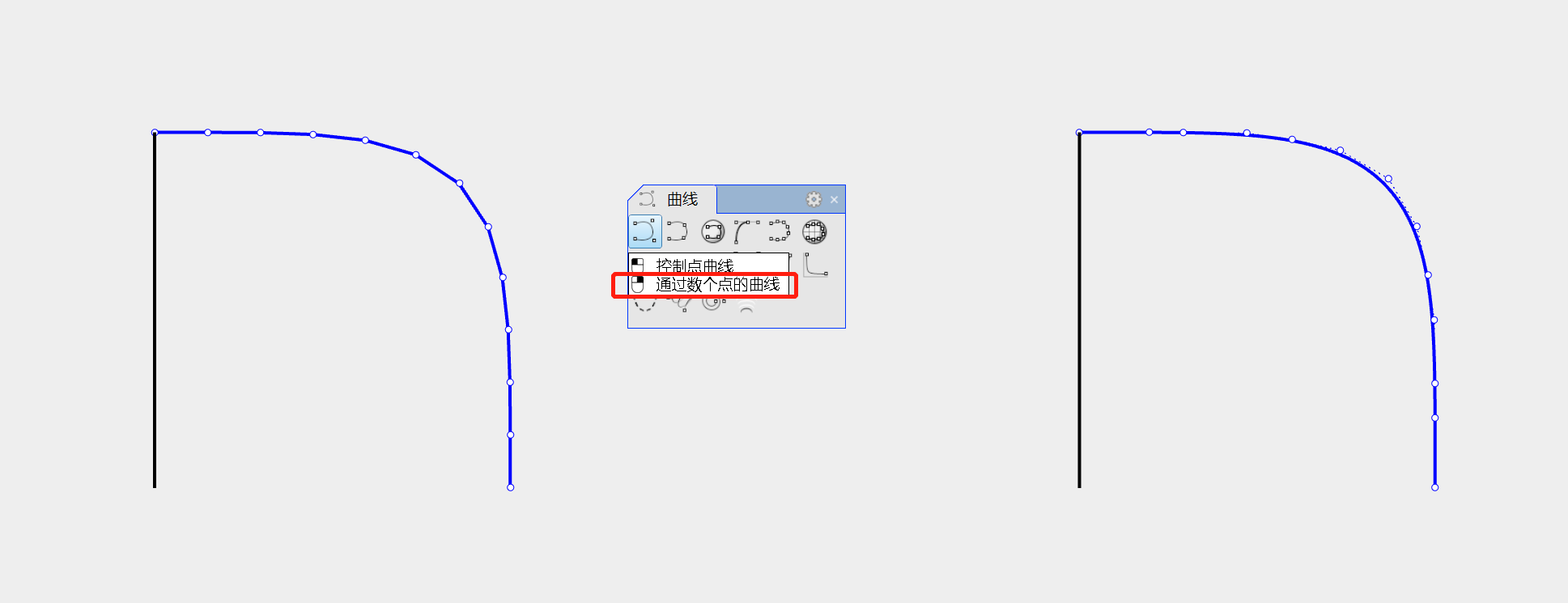
Then use its control point to reconstruct the curve through a curve of several points.
Check and check the results again.



The zebra pattern looks very smooth and decompressed, the rendering mode does not see creases, and the control points at the four corners are smooth.
The idea of rounded rectangular convex surface is over. If you have other ideas, you can also share them in the comment area to learn from each other and make common progress.
Next, let's study the overall elliptical eggshell surface represented by AirPods Pro. Its thinking is similar to that of the rounded rectangular convex surface above. First, 1/8 is completed and then mirrored. The point to note is the drawing of path lines and contour lines.
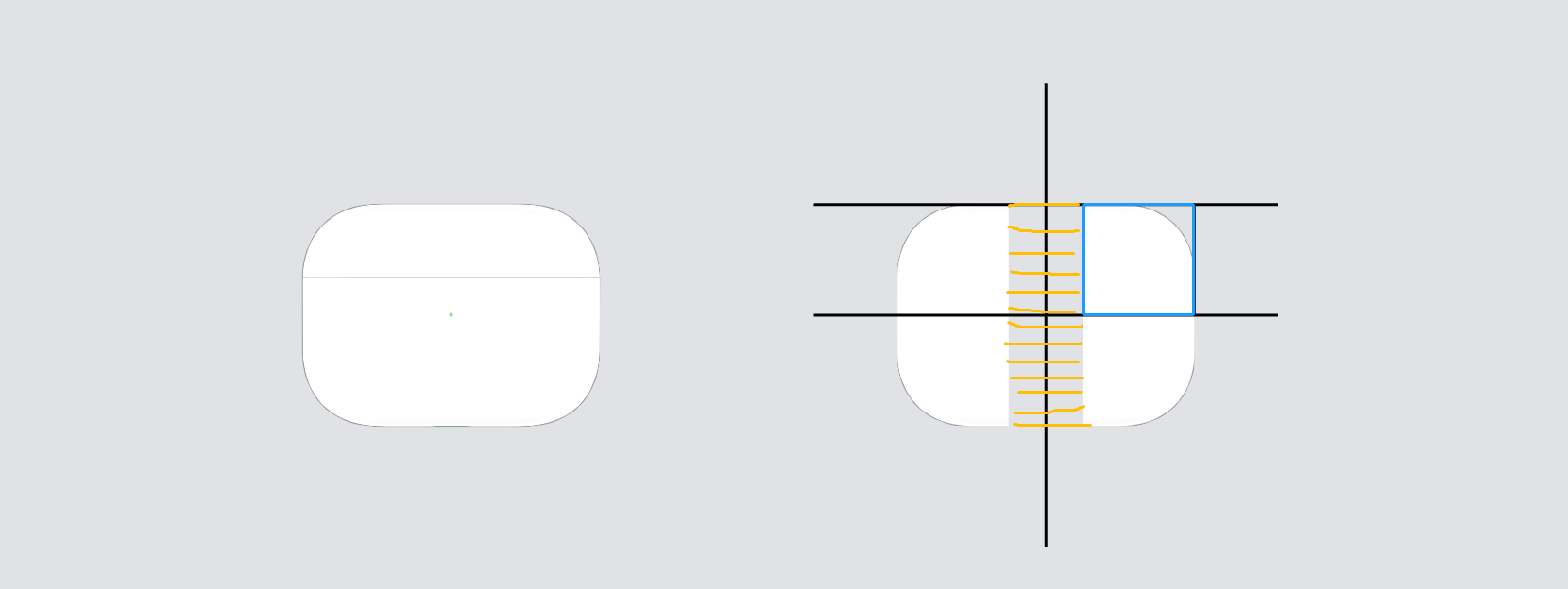
Because the whole AirPods Pro is rectangular, we have to try to divide it into 1/4 square modules, stretch it together, and finally mirror it into a whole. The general idea is shown in the figure above.

The pilot view, here is only a general demonstration, so there is no specific size marked.

Determine the path line of the 1/4 square module.

Then optimize the path line based on the above inference.
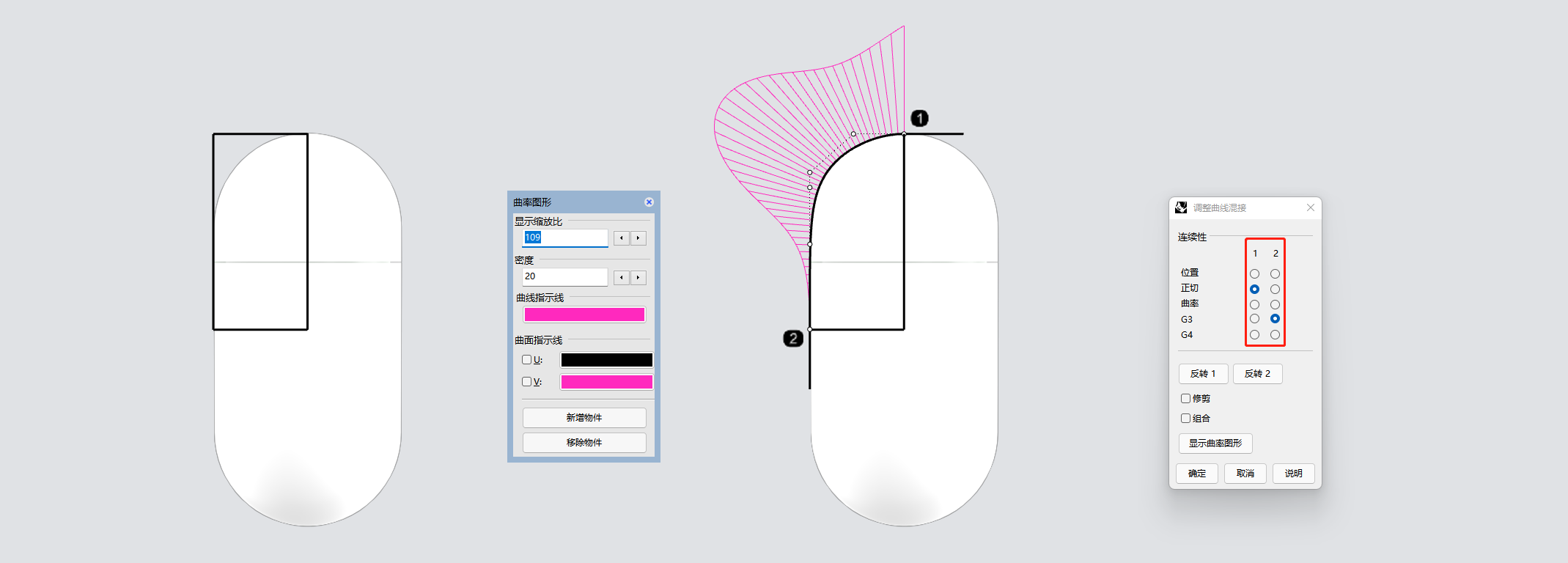
In the same way, draw the contour line. It should be noted here that the tangent curvature is maintained because the curve trend is short and the mirror image is required to be combined into a body in the later period.
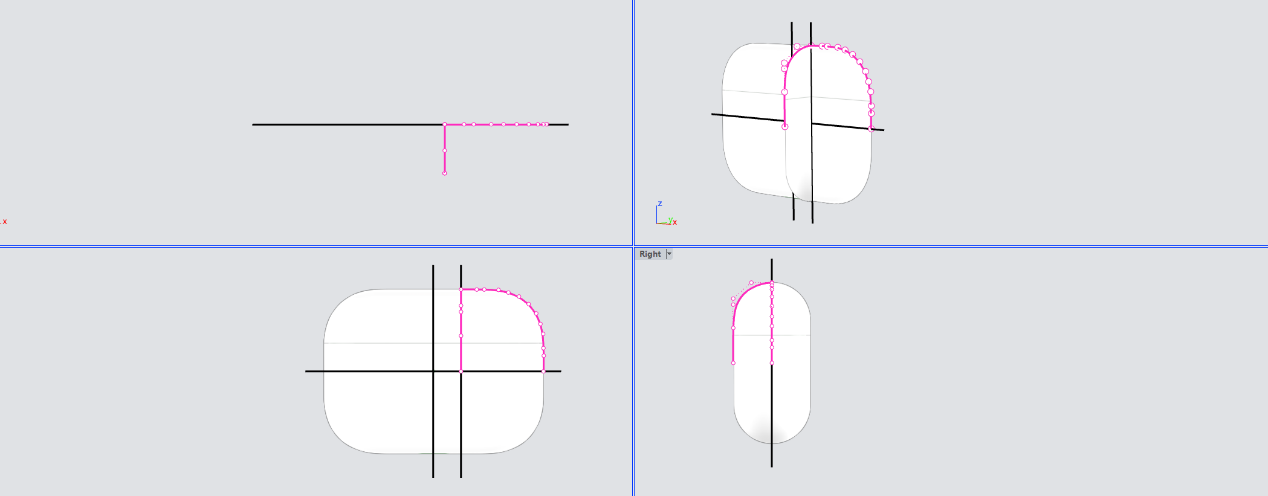
Take a look at the relationship between contour line and path line position as a whole.

Rotate molding along the path.

Open the control point and drag the leftmost row to the center line. At this point, the overall 1/8 surface is ready.
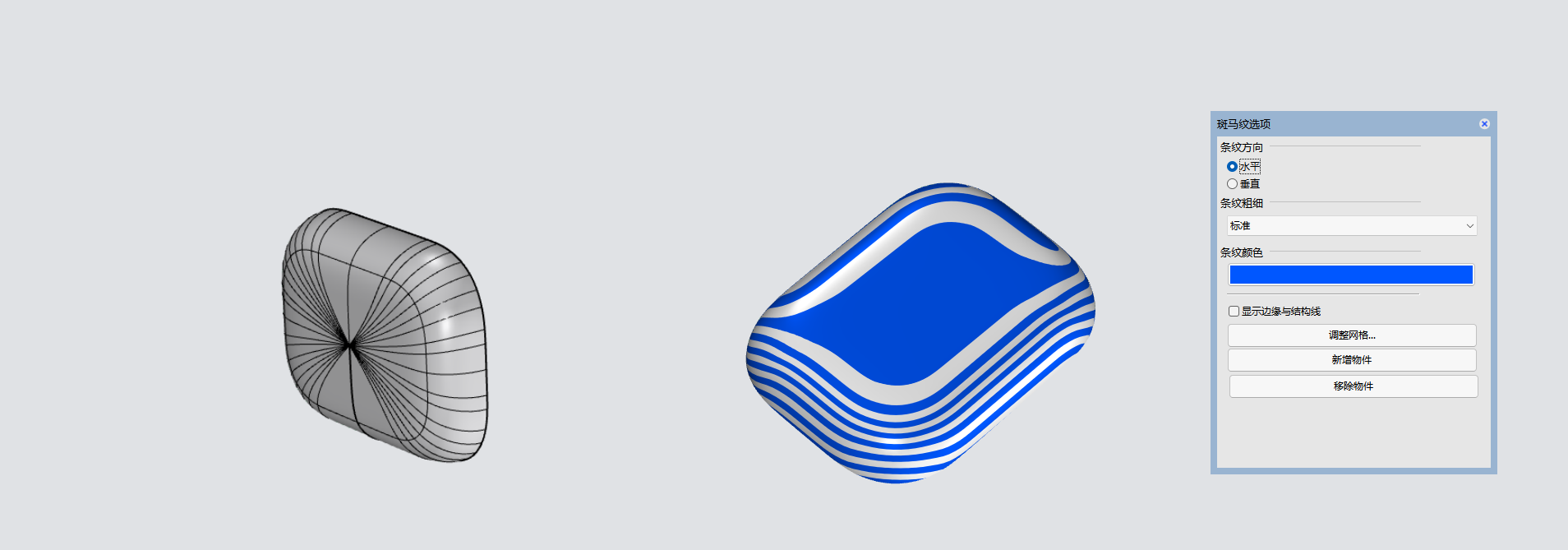
Merge into a whole 1/2 surface and look at it.

Rendering mode.


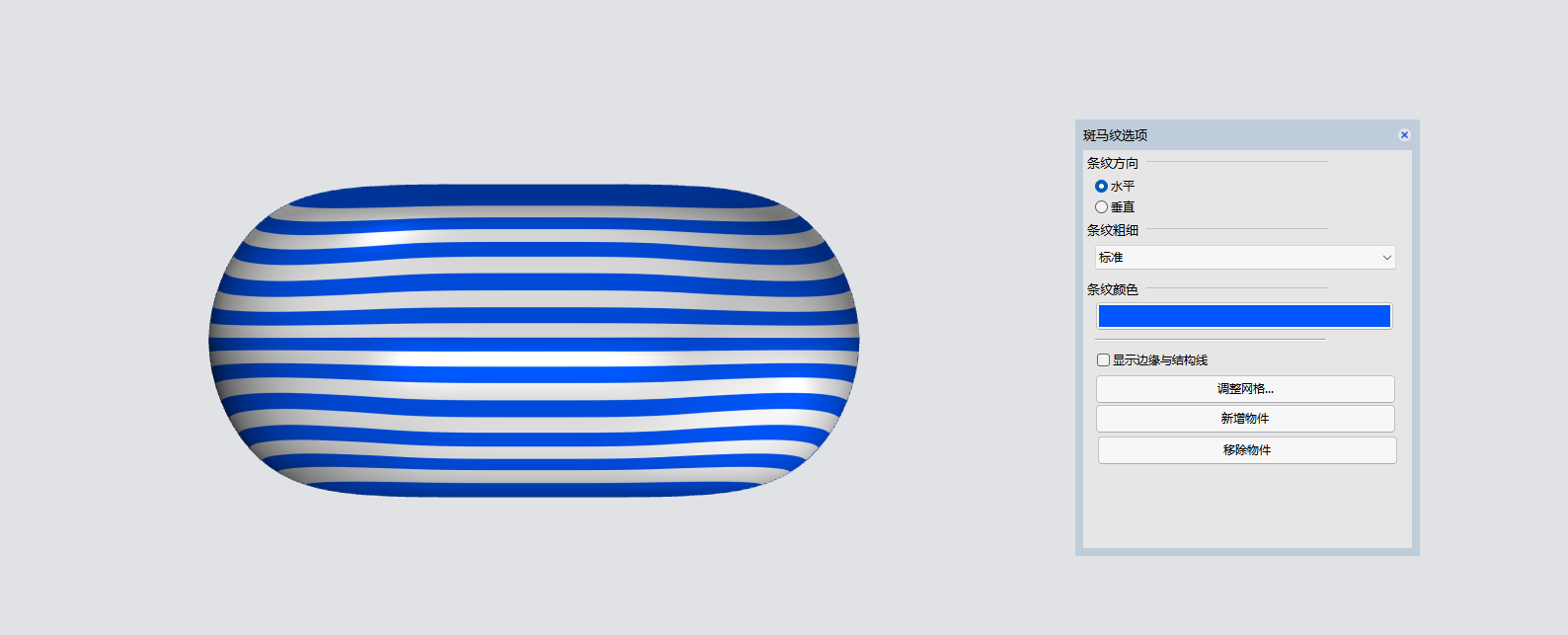
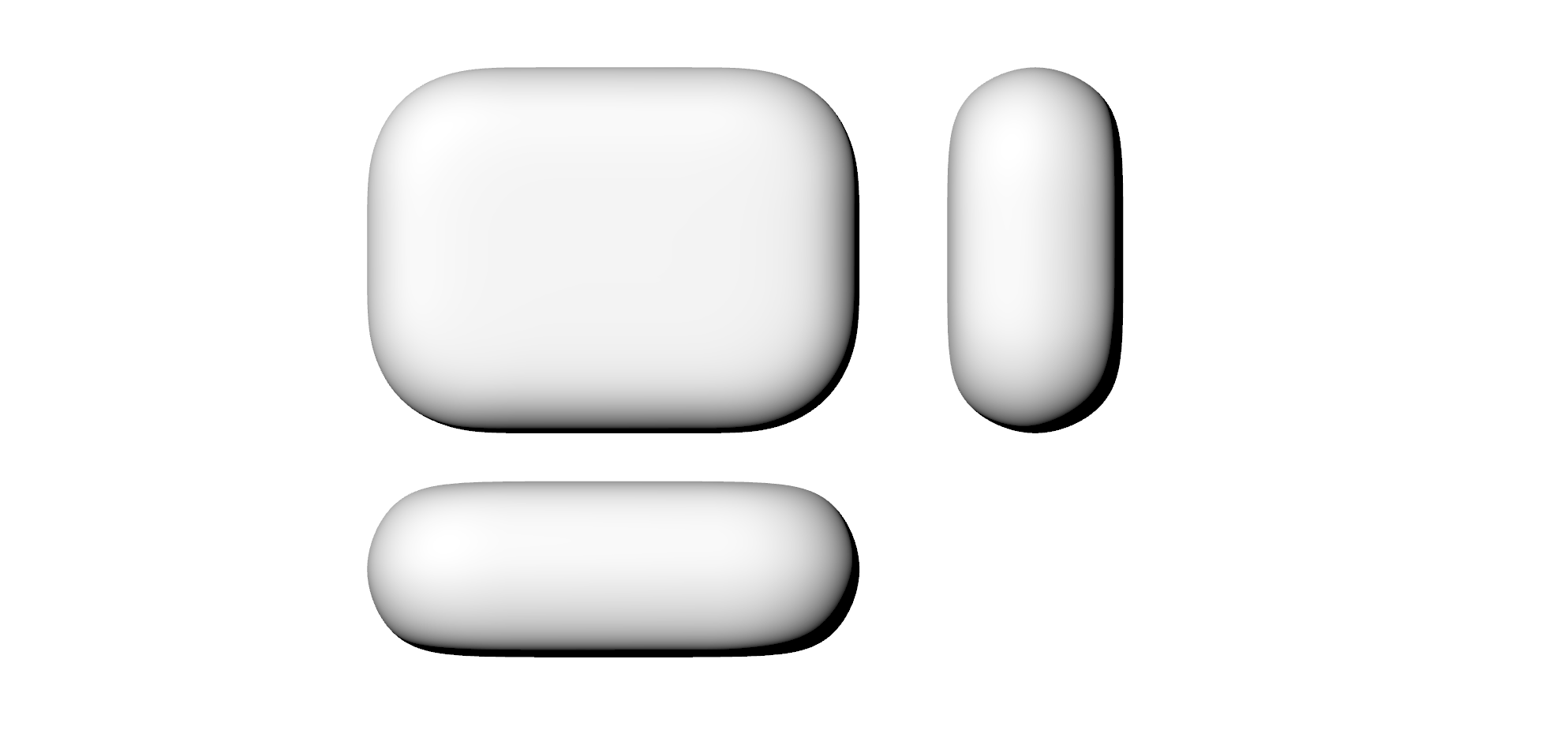

After the mirror image is combined into a whole, the effect is not bad.
The exploration process of the two types of eggshell modeling ideas is shared here. If you have other methods or suggestions, you are also welcome to communicate together.
If you want the source file or have any questions, you can add my WeChat.

The copyright of this work belongs to ZENMOKE. No use is allowed without explicit permission from owner.

New user?Create an account
Log In Reset your password.
Account existed?Log In
Read and agree to the User Agreement Terms of Use.

Please enter your email to reset your password
There is no malice in the bosses, just to ask why they abandon this method when doing this. What are the disadvantages of this regular method?
After dragging the edge of a row of lines, there are still obvious edges.
Why don't you use creo? You have to understand the structure in appearance.
Hand in homework
I used your method today, which is very good. I came back specially to praise the comment
Why is the number of points 13? What's the point?
(Try to use a curve that passes through several points to reconstruct the contour line. If it is directly reconstructed, it will be like the pink line on the left of the above figure. Therefore, it can be reconstructed into a 13-point 1-order polyline first. Ensure that the curve trend is evenly distributed at the same time.)
Does this step cause the points to deviate, and the points at the beginning are not on a horizontal plane?
Can you tell me how to mix the first method?
The effect of mixing is really fragrant.
Boss, this is a direct G4 mixed curve. Why do I use G4 mixed curve to draw a lot of sharp
Dry goods, to sit on the water dispenser to watch
poker Liu Ming............
Big Brother Niubi 666
Harm, now like to use TS Lala, so quick to provoke